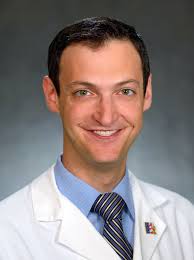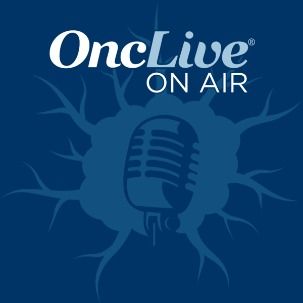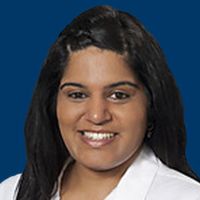Article
Shifting Lung Cancer Treatment Strategies in Response to COVID-19
Author(s):
Joshua M. Bauml, MD, discusses challenges in providing care to patients with lung cancer in light of the COVID-19 pandemic and ongoing efforts to reduce unnecessary exposure to the virus.
Joshua M. Bauml, MD, an assistant professor of medicine in the Department of Medicine of the Division of Hematology Oncology at the Hospital of the University of Pennsylvania

Joshua M. Bauml, MD
Through the use of telemedicine and modified treatment plans, experts in the cancer community are working hard to prevent exposure to COVID-19; these efforts are particularly important for patients with lung cancer, as this population is at increased risk of developing more severe complications from the virus, according to Joshua M. Bauml, MD.
“It seems that patients with lung cancer are at higher risk for more severe complications; this is likely due to multiple issues. For one, there is cancer in the lung that can limit the amount of normal lung tissue,” said Bauml. “Some patients have also undergone surgery or radiation that further limit the amount of healthy lung tissue. In addition, many patients with lung cancer have underlying lung disease, such as emphysema, asthma, or chronic bronchitis, that puts them at higher risk [for complications].”
Telemedicine has become an invaluable component of cancer care among the COVID-19 crisis. By conducting more virtual and phone appointments, some patients are able to continue their treatment journey from the safety of their own homes. For those who still need to come into the clinic, most care facilities have been diligently putting appropriate screening measures in place to minimize viral exposure.
Other efforts to reduce exposure to COVID-19 include spacing out treatment, delaying elective surgeries, and referring fewer patients to more high-risk procedures, such as bronchoscopy, according to Bauml.
In an interview with OncLive, Bauml, an assistant professor of medicine in the Department of Medicine of the Division of Hematology Oncology at the Hospital of the University of Pennsylvania, discussed challenges in providing care to patients with lung cancer in light of the COVID-19 pandemic and ongoing efforts to reduce unnecessary exposure to the virus.
OncLive: What do we know so far about COVID-19 and how it is affecting patients with lung cancer specifically?
Bauml: We have very limited data available now; it is a very fluid situation. That being said, based on data that have come out of both China and Italy, it does seem that patients with cancer in general, and lung cancer specifically, are at higher risk for complications from COVID-19 infection. That being said, it is important to remember that all these data remain very preliminary; there is so much more we don’t know versus what we do know at this point.
How are you differentiating symptoms of lung cancer with those from COVID-19?
It is very tricky! We are screening patients at Penn by asking if they have a cough, but many of my patients have a chronic cough. I tend to ask them whether [they have experienced] any changes to their symptoms. When they have a CT scan, [we see] a relatively classic appearance for COVID-19. Unfortunately, these findings are pretty similar to that of inflammation in the lungs, or pneumonitis, that can be seen with immunotherapy or TKIs, such as EGFR, ALK or ROS1. From there, we can often rely on when the changes happened to help address that clinical question.
Has this pandemic affected how you approach the treatment of your patients? For example, are you using immunotherapies less often, are you shifting approaches to delay surgeries, etc?
It has been a huge change. We are doing more and more visits as telemedicine, and we are also spacing out treatments when clinically feasible. For example, if a patient is on maintenance immunotherapy that I usually [administer] every 3 weeks, sometimes [I am] spacing that out to every 4 weeks [instead]. Also, bronchoscopy is one of the highest-risk procedures in the era of COVID-19, so I am referring fewer patients for it.
What has your institution done to reduce the risk of exposure to the virus for staff and patients?
We have minimized patient exposure by making as many visits telehealth as we can; we’re using telephone and video conferencing. Each one of the providers in our group come to clinic once per week for on-site support, but most of our patient interaction occurs with telehealth. If someone needs to see [someone face-to-face], one of the on-site providers can see them at any time. Providers are all wearing masks when in public areas. In addition, we have multiple screening questions [in place] to minimize the chance that anyone with COVID-19 [will] come into our clinic.
What is your personal experience with telemedicine? Are you facing any particular challenges?
Doing telehealth is very difficult when discussing tough topics like lung cancer. Being able to be present for my patients is so critical to provide them with necessary support. I try to stay in contact as much as possible using the tools we have available. I have also been referring many of my patients to the LUNGevity HelpLine if they have further questions: 844-360-5864; this is a great resource for my patients and their families, and [that HelpLine is] fully staffed.
How else has this virus interfered with the care of patients with lung cancer?
Patients with lung cancer are already dealing with substantial pressures from their diagnosis. Adding in the critical element of social distancing can weaken some important support networks. I encourage my patients to utilize other means to stay in touch with loved ones.
Are any interesting COVID-19—related research efforts being made that you wanted to highlight?
Many oncologists are pooling their efforts to build a large registry of outcomes for patients with lung cancer who [become infected with] COVID-19. This registry will serve as a critical data source in the future.
What is your take-home message to your colleagues regarding this virus and lung cancer?
I know this is a scary time, but we will get through this. [Patients should] ensure that they stay home when possible, practice social distancing, and wash their hands frequently. If they have any questions, they should call their doctor or the LUNGevity Helpline.
LUNGevity has also developed resources specifically for those affected by lung cancer during the time of COVID-19. A dedicated COVID-19 section of their website is continually updated to include Q&As with experts, including members of their esteemed Scientific Advisory Board (SAB), answering questions posed by the community; video interviews with members of the SAB and other medical experts; and a COVID-19 glossary. All updates and information, as well as expert videos, are also available on the website in Spanish and materials are currently being created in Mandarin.









